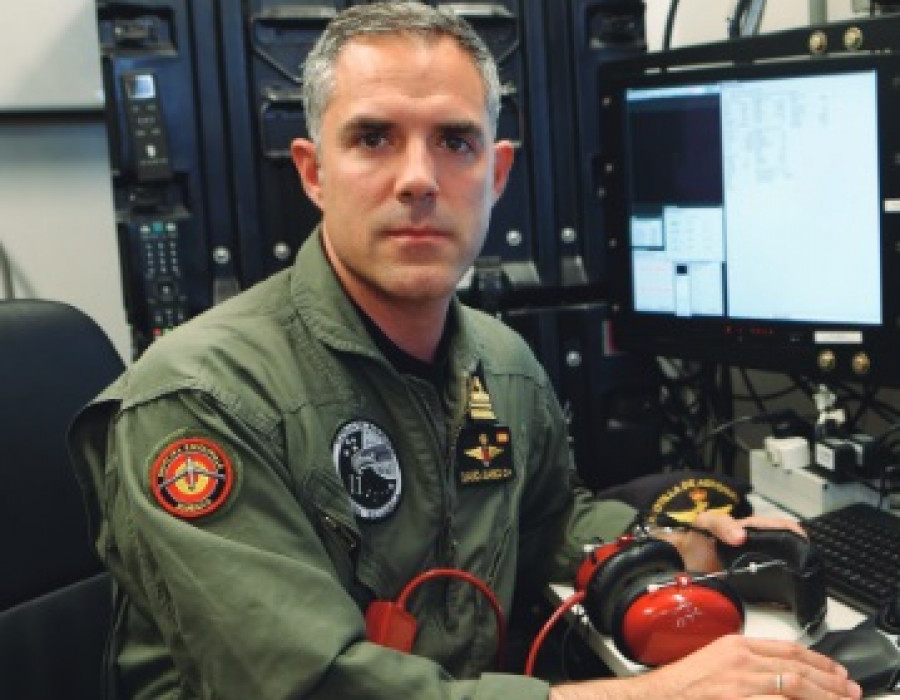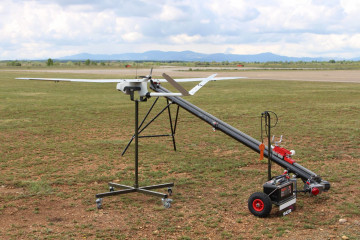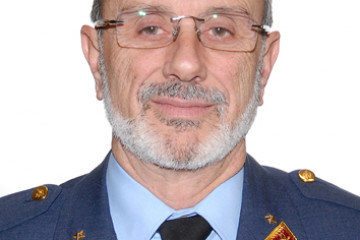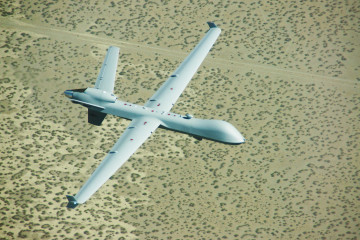Juárez Spanish Navy: Training in the 11th Wing is still a necessity

On Wednesday, May 30, the head of flight security of the Spanish Navy’s Aircraft Flotilla (FLOAN), LCdr. David Juárez Galán, will moderate a panel focused on the training of operators and crew at the upcoming Unvex Security & Defense drone summit.
Juárez said in an interview with Infodefensa.com that the need for training of both operators and maintenance workers in the use of unmanned aircraft systems (UAS) was one of the 11th Wing’s biggest requirements.
Juárez is an RPAS (remotely-piloted aircraft systems) pilot and in 2014 underwent specific training in the use of the Scaneagle system operated by the 11th Wing.
How has the need for UAS operator training grown in the past few years in the Navy?
The need for training is considerable anytime a new unit is created, or new material is incorporated, especially at first. This is due to it being necessary to reach a minimum level that will allow us to operate as a unit in all areas, but above all in three: operator/pilot, maintenance and cargo operator/photo interpretation. Once a sufficient or optimal level has been reached, the training needs will focus on the replacement rate for personnel that, due to the idiosyncrasies of military life, will often change postings.
What else do armies take into account when evaluating their training needs?
Apart from all that, another determining factor when establishing training needs is the level of ambition that the organization, in this case the Navy, decides for the unit, meaning the mission load assigned to it. The truth is that, due to the unit’s short life and the amount of operations it has taken part in since its creation, the need for training of both operators and maintenance specialists continues to be one of the biggest necessities.
What are the main criteria when determining the location of an RPAS unit in Spain?
There are many points to take into account when it comes to necessary infrastructure, but the determining factor is the answer to the question: “Where is it possible to fly?” The fact that Spanish legislation provides for a segregated airspace for RPAS, and that this airspace needs to be approved by authorities once a feasibility study has been performed, considerably complicates the choice. This is because it is better to be outside the controlled traffic region (CTR) of airports, airways, certain population clusters, etc., and at the same time have areas that are adequate for operations and training. In the Navy’s case, we took advantage of the airborne targets facilities on the coast, although it’s true that the Scaneagle allows for it since it doesn’t require airstrips for takeoff and landing.
The Scaneagle system can operate both on land as well as on vessels. What are the most significant differences between the two operations?
The biggest difference lies in the system’s complexity, since for embarking operations, two directional antennae are required for a 360-degree coverage, which must be gyro-stabilized for proper alignment. You also need commutation modules for antennae and video, a dedicated antenna for the vessel’s positioning and a gyroscope at the control stations. On the other hand, the onboard launch and recovery operations are more complex since factors such as the ship’s movement, the relative (apparent) wind velocity on deck and the relation between the latter and the true wind must all be taken into account.








